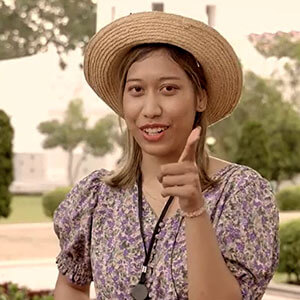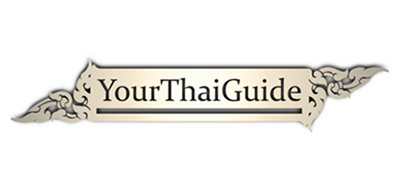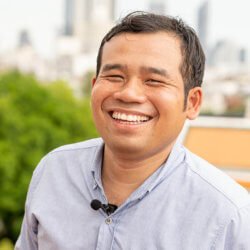Wat Sutat: One of Bangkok’s Most Revered Temples
What visit to Bangkok would be complete without visiting one of the city’s largest and most respected temples? Wat Sutat offers exactly this experience. Officially known as Wat Sutat Thepwararaam Racha-Voramaha-Vihan, it ranks among Bangkok’s oldest and largest temple complexes.
The temple was built during an important period spanning three royal reigns. Construction began under King Rama I and continued through King Rama III’s reign. Therefore, the temple reflects different architectural influences from this significant era in Thai history.
Moreover, the temple complex is famous for several distinctive features. For example, visitors admire its massive mural paintings, unique roofline, huge golden Buddha facing east, and the giant red swing structure outside. Additionally, these elements combine to create one of Bangkok’s most impressive religious sites.

Royal Status and Architectural Significance
Wat Sutat holds special importance in Thailand’s religious hierarchy. Specifically, it boasts the country’s largest Ubosoth, or ordination hall. Because of this impressive feature, it remains one of only six temples in Bangkok with the highest grade first-class royal temple status.
These temples are known as Racha-Voramaha-Vihan. Furthermore, only eight temples throughout all of Thailand receive this distinguished honor. Therefore, visiting Wat Sutat means experiencing one of the country’s most important religious sites.
A visit to Wat Sutat particularly appeals to people who appreciate beautifully decorated frescoes, storytelling history, and evidence of religious tolerance. Moreover, the temple demonstrates how Thai Buddhism has embraced artistic expression as a form of spiritual communication.

Magnificent Murals and Sacred Buddha
The temple’s mural paintings rank second only to those displayed at the Grand Palace. These incredible artworks cover the walls with detailed scenes from Buddhist stories and Thai history. Additionally, the paintings showcase the skills of master artists who worked for generations to complete them.
However, the murals represent just one of the temple’s treasures. The large reclining Buddha holds even greater significance for Thai people. Moreover, the remains of King Ananda Mahidol (Rama VIII) rest beneath this sacred statue. Therefore, the temple serves as both a place of worship and a royal memorial.
This connection to royalty makes Wat Sutat particularly meaningful for Thai visitors. Furthermore, many people come specifically to pay respects to this king who died young. Additionally, the combination of artistic beauty and royal history creates a deeply moving experience for all visitors.
The Giant Red Swing and Its Fascinating History
If the amazing mural paintings and sacred Buddha don’t satisfy your curiosity, then the large red swing structure outside will surely capture your attention. The red swing, known as Sao Ching Chaa, is a towering structure that demands attention from any passerby. Moreover, it never fails to raise questions about its purpose and history.
King Rama I ordered the creation of this impressive structure. During its active period, it served as a giant swing used during festivities to celebrate the Brahma New Year. Therefore, the swing played an important role in ancient Thai religious ceremonies.
The ceremony involved incredible displays of courage and skill. Teams of men would ride the massive swing in arcs reaching as high as 82 feet in the air. Moreover, while swinging at these dangerous heights, they attempted to grab bags full of silver and gold. Additionally, Brahman court astrologers held these prizes aloft as part of the ceremony.
A Dangerous Tradition Discontinued
The swing ceremony served a religious purpose beyond entertainment. Participants believed they were invoking Shiva’s blessing for the coming year through their daring performance. Therefore, the ritual combined physical skill with spiritual devotion in a uniquely Thai way.
However, the dangerous nature of this tradition eventually forced its end. The practice was discontinued in 1932 due to several fatalities that occurred during the ceremonies. Consequently, the swing now stands as a monument to this fascinating but perilous tradition.
Today, visitors can admire the impressive red structure while learning about its remarkable history. Furthermore, the swing serves as a reminder of how religious practices have evolved over time while maintaining their cultural significance.
Customer feedback – “Walking through here and seeing all the different murals depicting the 28 incarnations of Lord Buddha was pretty neat. Saying that, there are very few captions or english explanations for much of what you will see here. Having someone who can translate and tell the story of this place is a must.”

It is best to allow for half a day to visit Wat Sutat, including transport time from central Bangkok locations. A visit to Wat Sutat can be easily complemented by nearby attractions such as the Temple of the Emerald Buddha, Grand Palace, and Wat Pho.
Wat Sutat is open every day from 9am until 4pm. The main temple is open every day from 8:30am until 9pm.
Admission Price: 100 Baht (allows entry into every building) per person.
Prayer time (Monks chanting)
Monday thru Friday 12pm – 1pm & 7pm – 9pm
Saturday and Sunday 1pm – 3pm & 7pm – 9pm
Things you should be aware of when visiting Wat Sutat:
- Respectful attire is required. Wat Sutat is a functioning Thai Buddhist temple, and a such the management insists that visitors dress in a respectful manner. This means that men must wear long pants and short-sleeved or long-sleeved shirts (no tank tops or sleeveless shirts). Women must wear skirts or pants extending at least to the knee, and also should not wear a top that reveals bare shoulders.
- Visitors are allowed to take photographs in any area of the complex.
- It is recommended that you wear shoes that can be easily removed as you’ll need to take them off when entering any structure in the complex.








